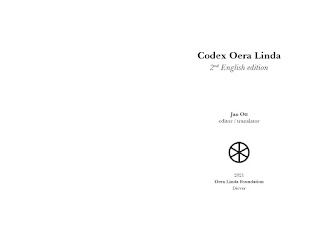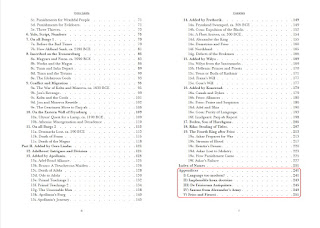"The distinction between Antiquity, Late Antiquity and Early Middle Age is a cultural representation that has no basis in reality." (3rd article linked below)If we look at written sources, “we have [for the 1st-3rd century] a spotlight on Rome, but know little about the 1st-3rd century in Constantinople or Aachen. Then we have a spotlight on Ravenna and Constantinople, but know little about the 4th-7th century in Rome or Aachen. Finally, we have a spotlight on Aachen in the 8th-10th century, but hardly know any details from Rome or Constantinople. I turn on all the lights at the same time and, thus, can see connections that were previously considered dark or completely unrecognizable.” Gunnar Heinsohn as quoted in same article
History of the first millennium (CE/AD) is questionable.
It is a big and complex topic. Please ignore it for now if you do not feel ready for it.
I have no solid answers yet, but the questions and doubts raised make sense to me and could be relevant for us. Oera Linda may contain clues to possible answers, to an explaining theory, which I intend to discuss later.
For who is interested, here are links to four articles and a video on the topic.
How Fake Is Roman Antiquity?
How Fake Is Church History?
How Long Was the First Millennium?
Revision in Islamic Chronology and Geography
Some first notes:
- Is Adel, nicknamed Atharik (ch. 16d, [155/05]), related to Athanaric, "king of the Visigoths" (trad. dating reign 369-381)?
- Is Alrik (ch. 19f, [209/25]), related to Alaric I, "king of the Visigoths" (trad. dating reign 395-410)
- Was Liko's letter dated year 803 NÉI KERSTEN BIGRIP ('in Christian understanding') written 803 years after the birth of Buda/ Krisen/ Yes-us (1600 years after Aldland sank), and not 803 years after the Christ of Christianity?; Liko would then have written in ca. 2400 a.A.s.; Our current year would then be ca. 3620 after the sinking of Aldland. There would have been a cataclysm shortly before Friso's fleet arrived; this would have been ca. 1700 years ago instead of 2300 years. However, there may have been more instances of timelines being manipulated or confused.
- Main problem is Hidde's dating combining the two timelines [00a] in a way that 13th century AD would be ca. 19 centuries after Buda's birth.
- Rex (king) = RIK.HIS or RIK.S, meaning 'of the empire/ kingdom' ?
- Julian calendar: calendar based on the JOL/ Yule (wheel of time)? Was the Chi-Rho symbol (derived from) the JOL?
- Augustus = derived from HÁGEST; highest?
- 'Caesar' derived from KJASAR; he who chooses?
- The 'belly-pain' (ch. 19a How punishment came) could refer to the Justinianic plague (541–549 AD)?
- "The remains of metropolitan London from Bede's 7th and 8th centuries cannot be found because, in our textbook chronology, residential quarters in the city of Londinium, a perfect fit for Bede's description, are dated to the 1st-3rd century." ('London in the First Millennium AD: Finding Bede’s Missing Metropolis', Heinsohn 2018.) Bede's dating would still make sense if his system would refer to birth of Buda/Yesus. Christianity as we know it today may have been reformed after his age.




































